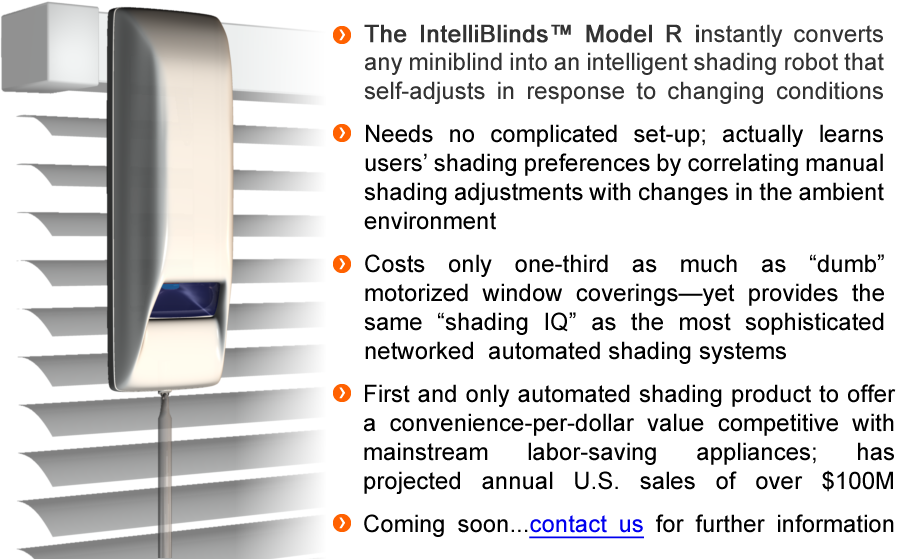
Residential Automated Shading: Stuck in a Market Niche
Window shading can have a significant impact on the comfort, mood, privacy, productivity, and even security of building occupants. So it shouldn't be surprising that some of the earliest domestic applications for labor-saving automation involved window shading.
But while automated shading has come come a long way since its inception in the early 20th century, market penetration has remained stuck in the low single-digits for decades. Meanwhile, other convenience-enhancing technologies for the home—such as automatic dishwashers, microwave ovens, and vacuum cleaners—have penetrations approaching 100%.
The reason for this disparity seems obvious: conventional automated shading products just don't offer compelling value to mainstream buyers. But exactly how (and by how much) do they fall short?
Quantifying Convenience
Answering that question requires a way to quantify the convenience provided by labor-saving appliances. Using such a tool to analyze the market reveals that demand for a labor-saving appliance is inversely proportional to its Price-to-Convenience (P/C) ratio—and that demand is virtually zero for P/C ratios greater than a certain threshold. Products with P/C ratios well below the threshold become mainstream appliances, while those with P/C ratios well above the threshold remain stuck as niche products. And conventional automated shading products have P/C ratios at least three times higher than the threshold for mainstream acceptance.
Why Isn't Automated Shading More Cost-Effective?
The challenge for mass-market automated shading is that adjusting window shading by hand requires much less average effort than the tasks automated by current mainstream appliances, like automatic dishwashers.
So, in order to achieve a competitively low P/C ratio, an automated shading product doesn't just have to be very smart (to virtually eliminate the need for deliberate shading adjustments); it also has to be very inexpensive. Achieving both of those things simultaneously requires more than good product design—it requires an entirely new approach to automated shading.
Finally...Automated Shading for the Mainstream Market
The IntelliBlinds™ Model R intelligent miniblind actuator is a small device that can be quickly retrofitted to any miniblind, instantly converting it into an intelligent shading robot. The Model R automatically adjusts its host blind to provide the users' preferred shading settings under changing conditions, virtually eliminating the need for deliberate shading adjustments.
And thanks to patented and patent-pending IntelliShading™ technology, the IntelliBlinds™ Model R is the first and only automated shading product that offers mainstream residential buyers a compelling value proposition.
The keys are innovative sensors and algorithms that enable a high "shading IQ" with simple hardware. When combined with innovations in mechatronics and user interfaces, the result is an automated shading product that does much more and yet costs much less than conventional automated shading products.
Even more significantly, the IntelliBlinds™ Model R is the first and only automated shading product that offers a P/C ratio low enough to achieve substantial market penetration:

Just as importantly, the Model R's small form factor and easy, tool-free installation make it highly compatible with a variety of existing distribution channels.
Thanks to IntelliShading™ technology, the IntelliBlinds™ Model R is poised to finally bring automated shading out of its niche and into the mainstream market.
Coming Soon
The IntelliBlinds™ Model R shares 90% of the parts and tooling of the commercialization-ready Model D, but uses more advanced sensors and different algorithms which are currently completing long-term testing. Contact us for further information.

